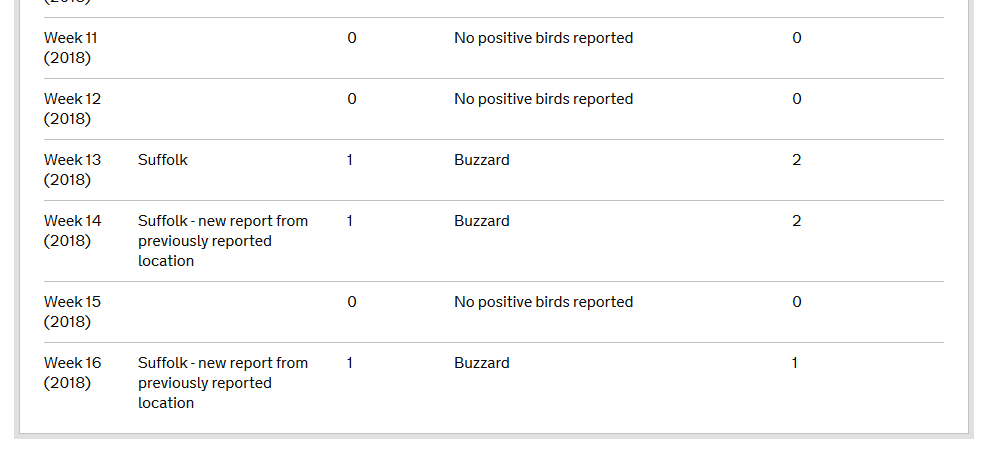Following last week’s update on bird flu cases in ‘wild’ birds, there has been another case, in another Buzzard in Suffolk.

So it looks as though the bird flu virus has been isolated from five dead Buzzards in the same location in Suffolk which might be the same location that a Goshawk tested positive too.
From where are these Buzzards getting the bird flu virus?
[registration_form]
One suspects that buzzards are getting the virus from dead or dying birds they prey upon—– pheasants perhaps.
I agree with Paul on this one, it seems likely with the millions of pheasants being released into the wild annually, possibly without any veterinary checks, the virus could easily be transmitted to wild birds such as buzzards from the this sauce. I recall when High Fly game hatchery was shut down because pheasants being raised had been infected, inspectors sent to help dispose of infected birds were seen chasing escaped birds, some were recaptured others were not. It became very costly to catch all the escaped birds, and in the end because of cost many birds, infected or not, were simply ignored and never recaptured.
This makes a very good case, even if they are not the source, but precautionary principle. Captive birds being released into the wild, such as partriges, ducks, peasants etc, should always be given a thorough veterinary check. It is routine when conservationists do it so why should others be exempt? Additionally, it is well known that disease mutations are often associated with ducks and pigs (both of which are kept in conditions where other birds such as starlings and corvids have easy access).
Does anyone monitor raptor numbers in Suffolk? There seem to be very few there to me- I don’t know how they manage to find so many!
Surely they should be finding pheasants if that hypothesis is true?
I’ve long pondered the potential problems associated with pheasants. It is fascinating that pheasants are regarded as livestock when reared, when released they are deemed wild, if any are caught up at the end of the season then they are livestock again.
So, why are they not inspected and tested for bird flu? Why are random road casualties not tested, or a couple of birds from each shoot? Perhaps it’s time that they carried rings so that any which are tested can be traced back (other livestock movements have to be logged) to where they were reared, also useful for insurance claims when hitting vehicles?
We are told they are reared, shot & eaten so they are food and surely it is important that they do not contain anything which might potentially pose a risk to humans through the food chain?